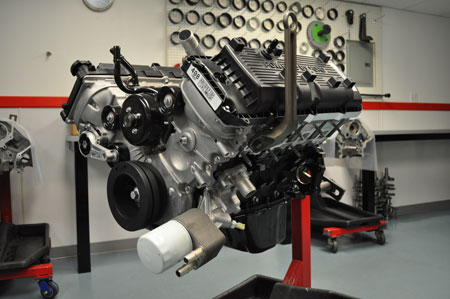In an age when kids would rather hot rod their computers than their cars, it’s kind of amazing that old fashioned hot rodding still exists – even thrives in today’s society.
While computers certainly have their place, the younger generation is still looking for entertainment and thrills – whether captured in HD?or in real life. And there are more ways than ever for people to get their kicks on a race track: from go-karts to golf carts, Indy cars to lawnmowers, diesel trucks to snowmobiles, the list goes on and on.
It’s all about competition and who is in the lead. For crying out loud, it’s a race to see who can have the fastest smart phone! The awesome thing about computers and technology is the fact that the internal combustion (IC) engine continues to reach for higher plateaus.
Over the past ten years, the IC engine has been resurrected to reach new heights of horsepower and torque – and it only keeps going. As soon as a new engine is released into the consumer market, hot rodders have figured out a way to make it faster.
Look at the development that the aftermarket has put into late-model engines such as the late-model Hemi, LS Chevrolet, Modular Ford, Honda, Subaru, Diesel trucks, etc. Ingenuity with whatever has the potential to make power only continues to become more refined.
The most effective way to upgrade an engine is to increase the cubic inches. Back in the day, most gearheads would look for performance by giving the engine an overhaul, which would include oversized pistons followed by some decent cylinder heads and a bigger carburetor. Then, they developed the art of swapping bigger crankshafts and connecting rods to achieve more stroke for more cubes.
I remember when the Chevrolet guys used to find old 400 cranks and turn the main journals down .200” to fit them into a 350 block to make 383 cubic inches. Since the 400 engine was no longer in production and there were a ton of 350 blocks this innovation naturally led to trying to find a good set of cast iron cylinder heads to feed the additional cubic inches. Later, head porting became popular along with installing bigger valves and finding more aggressive camshafts.
Some of yesterday’s engines, unfortunately, offered the exact opposite of excitement. Take for instance, the smog era of the late 1970s followed by the technology of the 1980s. You know as well as I do that we were living in the dark ages.
Instead of creating new engine designs to be more emissions compliant, the manufacturers simply bolted on the emissions garb to existing power plants and killed all performance. It was like living in the dark ages, with no horsepower in sight and aftermarket offerings such as aluminum cylinder heads and custom pistons were nothing more than a dream.
Such creativity is a far cry from what’s required today. Aftermarket companies now specialize in stroker kits for just about any application you can think of. The kits are complete rotating assemblies that are balanced and ready for installation. These stroker kits are not only available for yesterday’s classics, but also for today’s late-model powerhouses.
Aftermarket engine blocks are also available, completely machined and clearanced for bigger stroke applications and ready for the rotating assembly. Aluminum cylinder heads are now offered in many different engine combinations and if heads aren’t available (the late-model Hemi, for example), then some aftermarket companies offer CNC porting for your castings. This means more efficient camshaft and valvetrain designs are available to get the most out of your stroker project, whatever your application may be.
Long story short, making horsepower today should not be a problem. Just being able to put the correct pieces together is were it counts.
Phoenix-like, technology has helped engine excitement rise from the ashes of the past. And one of the newest additions to the stroker engine communty is found in the new F150 Ford Raptor truck.
In 2010, this truck debuted as an F-150 with all of the features to be called a truly sophisticated off-road vehicle. Along with such necessities as wide body and fenders and 12” of suspension travel with unique wheels and awesome creature comforts came the introduction of the 6.2L Raptor engine. The engine, a modular design, includes some technological features that set the engine apart from earlier designs offered by Ford.
The engine is a single overhead cam, variable valve timing design with a semi-hemi combustion chamber. Right out of the box, the engine produces 410 horsepower and 440 ft. lbs of torque. These are great numbers, so when looking at the pics of the truck or even possibly passing by one on the highway, could you possibly imagine any necessary engine modifications? Of course you could – you’re a car crazy gearhead like the rest of us!
Even though the truck has only been in production for three years, it continues to grow in popularity and has become a vehicle of choice for those who prefer a hot rod truck instead of a car.
If you’re interested in what can be done to improve the engine’s performance, prepare to be fulfilled. There are a lot of things you can do to meet the needs of your cutomers. Of course, speed costs money; we’re all familiar with this statement. But, with the efficiency of today’s engines, your customers won’t have to spend as much as they might expect to get an awesome return. In addition, the engine will still be emissions compliant for everyday use.
So, just when you think it’s good, it only continues to get better. Of course, today’s trend is to take your performance vehicle and incorporate some kind of forced induction system. In the aftermarket, there are plenty of resources to bolt-on a supercharger or turbocharger to just about any application.
When the Raptor appeared, Livernois Motors, Detroit, MI, took some time to develop an updated version. Most of their 6.2L Raptor engine upgrades are for those who are going to incorporate forced induction. To do so, upgrading the internals is critical.
When incorporating forced induction, it pays to have premium parts. The 6.2L stock platform comes with a 4.015? bore and a 3.74? stroke with a compression ratio of 9.8:1.
The cylinder heads flow 310 cfm on the intake @ .650” of lift and the exhaust flows 198 cfm @ .650? lift. For around 378 cubic inches, 410 horsepower and 440 ft. lbs of torque is pretty awesome. This gives a rear wheel horsepower rating of around 320 to 330, about double of what the flightless birds known as F150s in the ’80s could do.
To get the ball rolling for its internal Raptor upgrades, Livernois starts with improvements to the block. Thanks to its thick cylinder walls the block can be bored and honed .065?, resulting in a final 4.080? bore size. The new pistons are manufactured by JE with a ceramic coating and offered by Livernois in a choice of two compression ratios: 9.5:1 or 11:1. The connecting rods are made by Manley in a stock length forged H-beam design.
The crankshaft is then offset ground to achieve a stroke of 3.82?, giving the new Raptor version a 6.6L or 400 cubic inch displacement.
The rotating assembly is then balanced to +/- 1 gram. The block undergoes several other machining processes such as deburring of the casting on the inside and outside of the block, the oil passages are radiused and smoothed for better oil flow, along with decking to ensure proper quench and squareness with correct surface finish.
After the block is machined, the rotating assembly is installed. Thanks to modern day technology, precision machining is a given. At Livernois, special care is taken to ensure that the piston to wall clearance will be between +/- .0001?, the main bearing clearances will be between +/- .0002?, and the rod bearing clearances between +/- .0002?. The block is fitted with ARP main studs with special modifications to the front main bearing for blower drive applications and modified thrust bearing for improved wear and durability.
The cylinder heads are then prepped to undergo some major modifications. ?I always thought the cylinder heads from the factory were pretty good, but Livernois seems to have some added features which really bring them to life.
First of all, the cylinder head is fully ported with a proven CNC program which brings head flow to 356 cfm @ .650? on the intake and 232 cfm @ .650? on the exhaust. They install a set of upgraded valve springs with special ground billet camshafts. Other improvements include a rocker brace system designed by Livernois along with cam phaser limiters for more variable valve timing control.
To put these modifications into perspective, the conversion from the stock 6.2L Raptor to the stroked 6.6L version with 11:1 compression, results in 150 more rear wheel horsepower. Most of the Raptor builds at Livernois are done using the 9.5:1 compression version. As mentioned earlier, these modifications are for forced induction add-ons. In twin turbo applications, the 6.6L Raptor conversions can produce over 800 rear wheel horsepower.
A raptor, of course, is a “bird of prey,” and the Raptor F150 was Ford’s answer to the demand for an off-road application. Produced to compete with the Chevrolet Z71 Silverado and Dodge Power Wagon, this unique vehicle has a very different Ford appearance and definitely offers all the character and power for off-road supremacy.
From the factory, the trucks are equipped with Fox Racing shocks, massive skid plates, an electronic locking rear differential, a Torsen front differential, high performance all terrain tires, seven more inches of track width, front and rear cameras, and “Hill Descent Control.”
Obviously, we’re not looking to help increase sales for Ford, but this article may give a perspective on what technology can do. If your racing customers were to be invited to upgrade their stock Raptor engines with some machine work and some parts changes, they could gain 150 rear wheel horsepower.
This is why hot rodding has become so popular. Twenty years ago, such modifications would have been a major undertaking. Now, the technology lies at your fingertips.
Technology has brought new designs, new machining processes and new parts built with better materials and tighter tolerances. And technology can help tune for maximum power and efficiency.
Thanks to all these achievements, we can employ the new era of hotrodding into the cars of yesterday as well as the excitement of yesterday into the vehicles of today. Now we can enjoy drivability along with creature comforts such as air conditioning and power steering with power that would double what we could acquire twenty years ago.
Livernois: Made In Detroit
Livernois Motorsports of Detroit has been very active in late model performance for around 15 years but its real history goes back much further.
Originally started in 1949 as Livernois Engineering, the shop designed aluminum radiators for automotive use. In addition to designing radiators, they also produced the tooling and machines to make the radiators. Their facility is located on Livernois Avenue in Detroit, Michigan.
In 1999, Livernois Motorsports was created to develop products for high end demands of automotive enthusiasts. Livernois Motorsports now develops and tests new products along with adding product lines from hundreds of vendors to provide the latest technology. In addition to developing, testing, and retailing, Livernois is a supplier to GM, Ford, and Chrysler through the OEM level and the performance parts business.
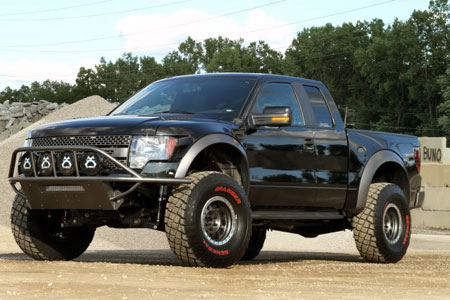
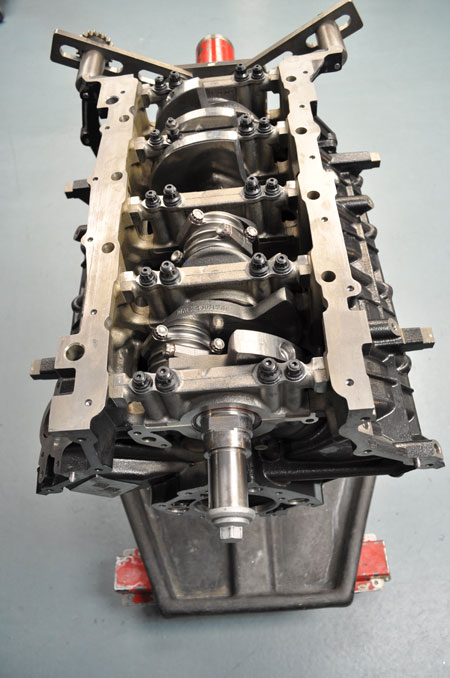
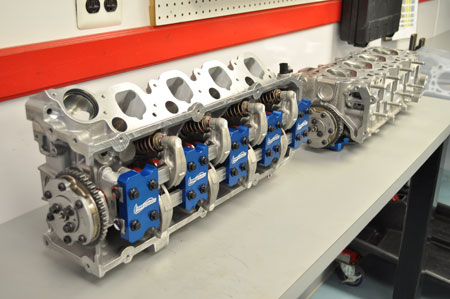
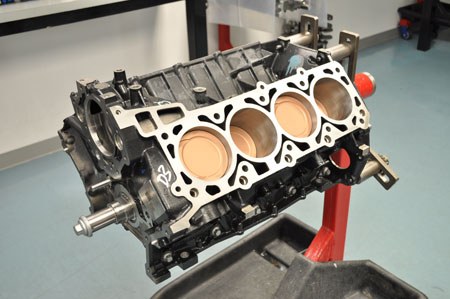
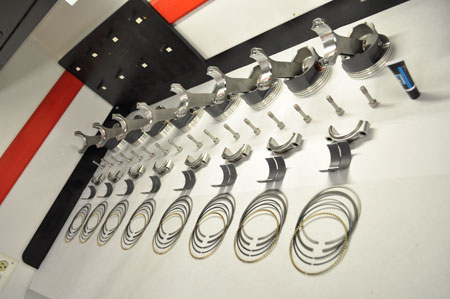
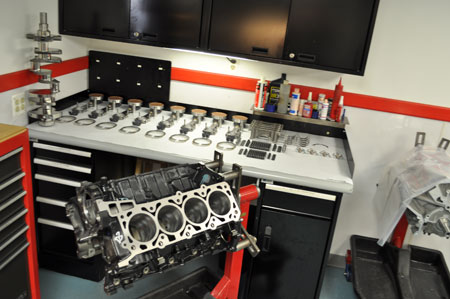 “/>
“/>
For more information on stroker engines, check out our 6th annual Stroker Engines Resource Guide.
